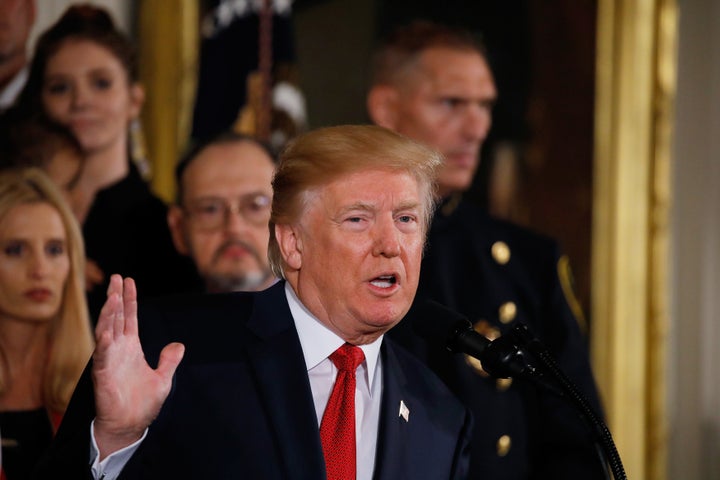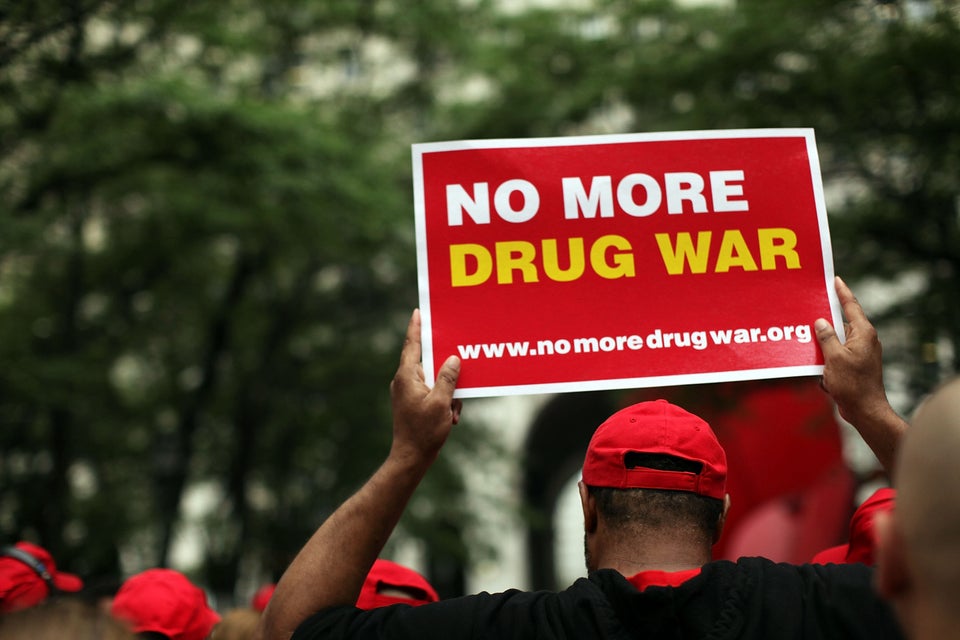
WASHINGTON ― President Donald Trump announced Thursday that he’s declaring the opioid epidemic a national public health emergency and vowed to fight drug addiction.
“I am directing all executive agencies to use every appropriate emergency authority to fight the opioid crisis,” he said during a White House event.
But there’s a gaping hole in his plan: He’s not directing any new money to it. In fact, he wants to cut federal spending on the opioid crisis.
Trump’s 2018 budget calls for reducing funding for the opioid epidemic by $97 million compared with 2017 levels, said Democratic Sen. Patrick Leahy, vice chairman of the Appropriations Committee. Trump’s budget also calls for eliminating programs like the anti-heroin task force that have proved effective in states like Vermont, Leahy’s home state.
“There is no action or new funding behind the president’s empty words to address this crisis,” Leahy said in a statement. “This is not acceptable.”
During his Thursday remarks, the president touted the role the National Institutes of Health can play in combating the epidemic that causes roughly 91 fatal overdoses every day. But his budget calls for cutting NIH’s budget from $32 billion to $26 billion.
Trump won’t make much of a dent in opioid addiction without new resources. The declaration of a public health emergency means federal agencies can provide some expanded access to telemedicine in rural areas and shift some federal grants toward addressing the crisis. But it’s a much smaller step than issuing a national disaster declaration, which would let the federal government tap into Federal Emergency Management Agency funds to tackle opioid addiction.
Rep. Carol Shea-Porter (D-N.H.), who represents a state hit hard by the opioid epidemic, said Trump should have gone with the disaster declaration.
“The $57,000 that [Health and Human Services] officials say is currently in the Public Health Emergency Fund is a grossly insufficient dollar amount to devote to this urgent crisis,” she said in a statement.
The president could have tied other actions to his public health emergency declaration but did not, said Regina LaBelle, former chief of staff at the Office of National Drug Control Policy in the Obama administration.
“Such actions could have included building a naloxone stockpile, addressing regulatory barriers to mobile methadone vans, not to mention including more funding to address the epidemic,” LaBelle said in a statement. “At a time when only 20 percent of people with opioid use disorders get needed treatment, we need to act with urgency.”
Regardless, Trump made a big splash out of his announcement. He spoke to a packed room while on stage with police officers and family members of heroin addicts. He emphasized the need to teach young kids to say no to drugs so they won’t use them later in life ― a throwback to the 1980s anti-drug campaign Just Say No (which never showed a direct connection to reduced drug use).
“There is nothing desirable about drugs,” Trump declared. “They’re bad.”

